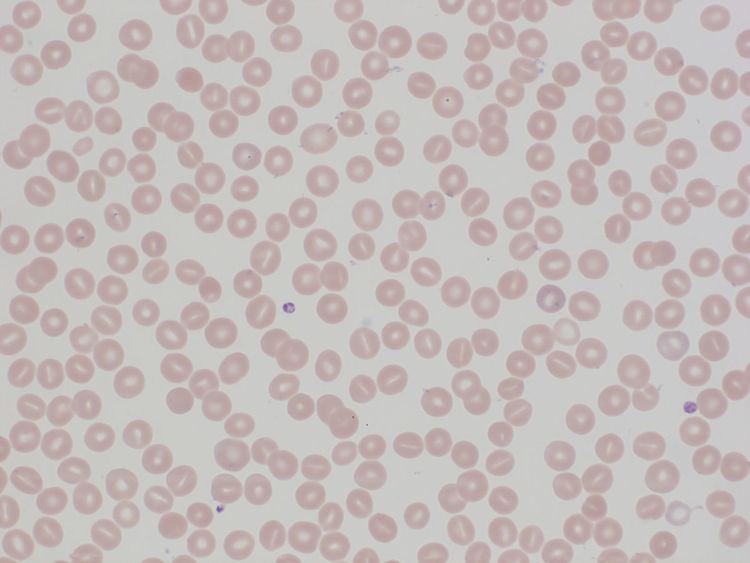Specialty hematology ICD-9-CM 282.8 DiseasesDB 29710 | ICD-10 D58.8 OMIM 185000 185010 | |
 | ||
Hereditary stomatocytosis describes a number of inherited autosomal dominant human conditions which affect the red blood cell, in which the membrane or outer coating of the cell 'leaks' sodium and potassium ions.
Contents
Pathophysiology
Osmosis leads to the red blood cell having a constant tendency to swell and burst. This tendency is countered by manipulating the flow of sodium and potassium ions. A 'pump' forces sodium out of the cell and potassium in, and this action is balanced by a process called 'the passive leak'. In the hereditary stomatocytoses, the passive leak is increased and the cell becomes swamped with salt and water. The cell lyses and a haemolytic anaemia results. For as yet unknown reasons, the cells take on the shape of a cup, with a 'mouth-shaped' (stoma) area of central pallor. The two varieties of stomatocytosis classified with respect to hydration status are overhydrated (hydrocytosis) and dehydrated (xerocytosis).
Variants
Haematologists have identified a number of variants. These can be classified as below.
There are other families that do not fall neatly into any of these classifications.
Stomatocytosis is also found as a hereditary disease in Alaskan malamute and miniature schnauzer dogs.
Treatment
At present there is no specific treatment. Many patients with haemolytic anaemia take folic acid (vitamin B9) since the greater turnover of cells consumes this vitamin. During crises transfusion may be required. Clotting problems can occur for which anticoagulation may be needed.
Causes
The cause for these hereditary conditions is now understood to be various mutations in the erythrocyte membrane protein, band 3. It is this protein which mediates the cation leaks which are characteristic of this disease.
